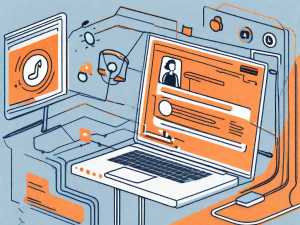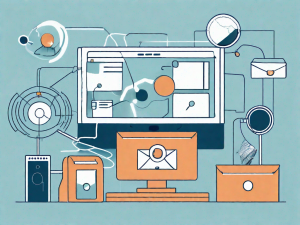Understanding your customers is the first step towards building lasting, meaningful relationships with them. Given that 86% of online shoppers are ready to spend more on better customer experiences, personalization is key to generating a consistent revenue stream.
Studies by Walker and Frost & Sullivan revealed the increasing importance of customer experience. In fact, customer experience is set to become a more critical brand differentiator than even price or product.
Simply put, customers prioritize brands that make an effort to interact with them and provide a personalized experience. Modern consumers value personalization to the point where they might pick a pricier product primarily because the brand offers the best customer experience. (Apple fans, we’re looking at you. ???? ????)
Techniques To Help Understand Customers Better
Automation, especially for email, has revolutionized digital marketing. Brands use email and SMS automation for a myriad of reasons. For example, you can use automation to drive post-purchase sales, reduce abandoned cart occurrences, and provide tracking updates.
However, automation isn’t one of the tools to help understand customers better. Sure, you can use software to improve their experiences, but how do you actually get inside their heads?
By interacting with them, of course. And here are the best ways to do that.
Surveys as tools to help understand customers
Surveys are a direct and efficient way to collect feedback from customers. They also give you a great deal of control over the data and can help you on implementing a customer feedback loop. With a survey, you can specify the questions and provide dedicated options to choose from (e.g., using the Likert scale).
To get the best results, keep your surveys concise. SurveyMonkey revealed some insightful information regarding the length of surveys. They found that, for longer surveys, respondents spent less time on each question, and the completion rates dropped by up to 20%.
Therefore, for the most accurate results, keep your surveys short – under 30 questions – and avoid questions that are too long.
Analyzing live chat and support emails
Analyzing support requests gives you a transparent view of customer pain points and any friction in the conversion funnel. While some problems will be one-off, if you’re getting similar support requests from various customers, it means you need to implement a permanent fix to improve the overall experience.
Good live chat software (live LiveHelpNow, cough, cough) implements webhooks, one of the great tools to help understand customers better. Webhooks allow live chat admins to transfer data from surveys, tickets and callbacks straight into their own CRM systems for real-time customer feedback review. That offers managers an opportunity to remedy sticky customer situations immediately. Additionally, if customers are happy, contact them right away to request a review or a referral.
[fullcontrol title=”Learn more about using LiveHelpNow tools to help understand customers” subtitle=”” linkurl=”https://livehelpnow.net/schedule-demo/” linktext=”Schedule a demo”]
Reviewing social media comments
Sprout Social revealed that around 47% of customers complaining about a product/service used social media as an outlet for feedback. Monitoring comments and reviews left on your Facebook page is thus critical to keeping tabs on your customer satisfaction levels. (You wouldn’t want some angry gossip going around without you knowing, would you?)
Hey there, we’re sorry your order hasn’t arrived yet and would love to look into this for you. A direct message is being sent your way now.
— Chewy (@Chewy) November 11, 2021
Social media comments reveal more than just customer complaints, however. You can see what questions prospects are asking about your product. Additionally, you can learn what hesitations prevent them from converting.
Map the customer journey
Mapping your customer journey is vital to genuinely getting in your customers’ heads. By putting yourself in their shoes and viewing your business from a fresh perspective, you can better understand the challenges customers face and any friction along the buying journey. It’s also a way to know how many and what types of people are involved in each step of your product’s buying decision.
Keep an eye on competitors
Monitoring your competition helps set realistic performance reporting benchmarks and keeps your strategy up to date. If your competitors are delivering a better consumer experience, you’re at risk of losing customers to them. Therefore, keeping an eye on competitors helps you stay ahead. If they’re delivering a great personalized experience, create a better one.
A5. Once in a while, it’s good to track what your competitors are doing. The idea isn’t to copy them, but to identify what they’re doing differently and if you can do it better. Their performance might even inspire some fresh ideas! #ContentWritingChat
— Masooma | Content Writer (@inkandcopy) June 1, 2021
Software tools to help understand customers’ minds
Technology and software advancements have revolutionized how brands collect, process, and utilize data and analytics. With the right software tools, you can gain helpful insight into your customers’ minds and better understand their expectations.
Personalization software
Personalization software is a broad term that covers applications with features that personalize your customer’s experiences. These applications include A/B testing software, segmentation tools, popup generators, live chat integrations, CRMs, and even design tools.
Personalization software aims to help deliver relevant, specific content to each audience segment or even individual. Tools for segmentation and A/B testing help tailor your content delivery efforts and share content with customers that they value. In contrast, design tools help customize the content or experience itself.
Pre and post-purchase survey tools
Pre and post-purchase survey tools help identify friction in the customer journey both before and after their purchase.
With these survey tools, therefore, you can identify causes that are preventing specific prospects from converting. Are they facing problems along their buyer journey? Do they lack confidence in your brand? After learning about your customers’ and prospects’ concerns, you can remove friction by solving those problems to secure the sale.
Customer support software
Microsoft found that, for 90% of consumers in the U.S, customer service was a determining factor when deciding whether to do business with a brand or not. However, providing consistent support at scale is difficult, especially for rapidly growing e-commerce brands. Fortunately, customer support software helps tailor your efforts without driving costs through the roof.
Depending on the software, customer support tools provide various features. These features include automation, personalization, live chat integration, ticket generation, prioritization, and more.
Additionally, it’s also worth noting that 81% of customers prefer to solve problems by themselves, which is why creating informational content for self-service troubleshooting is valuable in the long run. If you create a knowledge base, customers can solve many of their problems, reducing your customer support requests.
Tools to Help Understand Customers Can Help Make That Sale
As consumer trends evolve, brands have to consistently meet customer expectations to stay relevant and maintain customer loyalty. Modern consumers are increasingly prioritizing personalization. They expect brands to read their minds and deliver precisely what they’re looking for. To stay ahead of your competition, you need to understand your customers better than they do and tailor your brand strategy accordingly.
Of course, since you can’t actually read minds, the next best course of action is to learn about your customers through active effort. You can use surveys to gather information directly. Or you can learn about your audience through monitoring channels like social media or support request analysis. Personalization is and will continue to be one of the most significant differentiating factors between brands, and its importance should be reflected in your marketing strategy.




